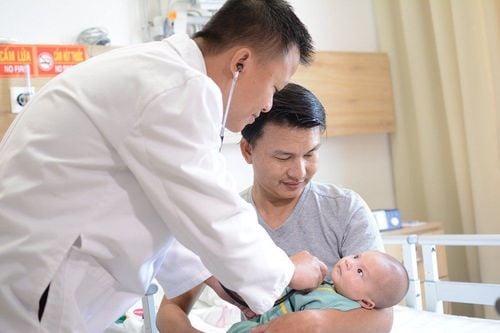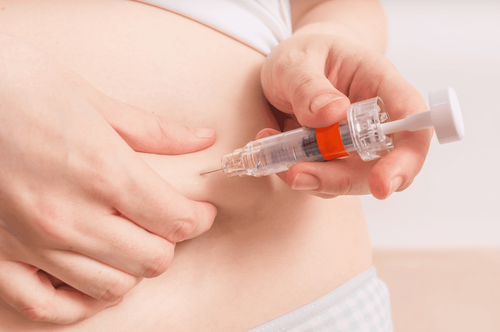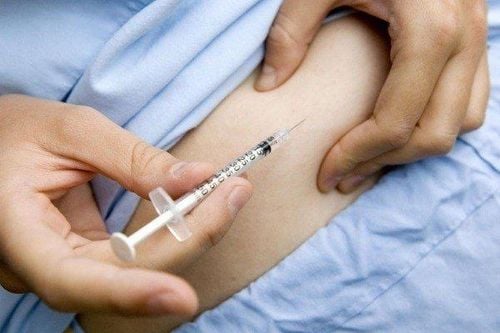This is an automatically translated article.
In vitro fertilization (IVF) is indicated for unexplained infertility, fallopian tube problems or when sperm quality is too poor.
1. Causes of infertility in couples
Infertility is a condition in which a couple of reproductive age have regular intercourse, and do not use contraception, after 6 months (for wives over 35 years old) or 12 months (for wives under 35 years old) 35 years old) but have not conceived naturally.
This condition is divided into two types: primary infertility and secondary infertility, in which:
Primary infertility is used for a couple who have never been pregnant. Secondary infertility refers to couples who have been pregnant at least once and then want to continue to have children but are unable to get pregnant. According to statistics, the frequency of infertility due to husband and wife is about the same. It can be by the wife alone, by the husband, or by both husband and wife. Specifically:
Causes of infertility due to the husband:
Abnormalities in sperm quality and quantity. Erectile dysfunction (impotence) and ejaculation disorders (retrograde ejaculation, premature ejaculation) reduce the chances of pregnancy. The husband has primary and secondary hypogonadism, genital tract infection, mumps, varicocele, exposure to chemicals and radiation that make sperm weak, reduced or absent. Addiction to alcohol, drug addiction. The structure of the genitals has abnormalities such as no vas deferens, blocked vas deferens, undescended testicles, or varicocele,... Causes of infertility due to the wife:
Those who have ever burned Cold or electrocautery of the cervix destroys mucus-secreting cells, and damages the cervix after birth. Cervicitis can also affect sperm viability. Women who have had previous genital infections such as cervicitis, inflammation of the uterus, or inflammation of the fallopian tubes narrow or block the fallopian tubes so that the egg cannot travel into the uterus. Women who have had an IUD, abortion, miscarriage, or ectopic pregnancy in the past will also have changes to the normal structure of the uterus and fallopian tubes, such as adhesions or blocked fallopian tubes. There are also some other causes such as uterine malformations, uterine fibroids, previous pelvic surgery, pelvic inflammatory disease. However, about 10% of couples, after performing a full range of survey tests, without finding any medical reason for infertility, are called "Unexplained Infertility".
2. Tests to diagnose infertility
Common tests performed in the diagnosis of infertility can be performed, which are:Tests in the husband:
In the husband, the most important test is a sperm test (Semen analysis). , if the husband has been tested without seeing sperm, the husband may have to have blood tests and an intensive androgynous examination.
Tests in the wife:
The wife needs to have a blood test to assess ovarian reserve: Anti-Mullerian Hormone (AMH) levels, FSH and Estradiol levels, egg count, ovarian quality. good or not, is there a polycystic ovary syndrome,... Ultrasound of the uterus and ovaries to detect if there is fluid retention in the fallopian tubes in some cases, whether there are uterine fibroids in the uterus, Do you have an ovarian cyst or polycystic ovary? X-ray (HSG) to check the uterine cavity and fallopian tubes, because if the fallopian tubes are blocked on both sides, it is impossible to get pregnant naturally. And other tests such as: Gynecological ultrasound, hysteroscopy and lower abdominal cavity indicated by the doctor. Each infertile patient may be assigned different tests. And it is also not necessary to perform all of the above tests depending on the patient's medical condition, the doctor will offer the most appropriate plan.

Xét nghiệm tinh trùng giúp chẩn đoán hiếm muộn
3. Infertility treatments
Once the specific cause has been found, there are two most common assisted reproductive methods in infertility treatment, namely: In vitro fertilization (IVF) and intrauterine insemination (IUI) ).3.1 Intrauterine insemination (IUI) Intrauterine insemination (IUI), is more commonly used and less expensive than other methods, for those Couples have the following signs:
Ejaculation disorders, weak, dilute and less motile sperm. Irregular ovulation. Mild and moderate endometriosis. Couples who are unable to have sex in the usual way because of injury or deformity. Infertility of unknown cause. The most important thing for this method to be successful is that the wife must have at least a healthy fallopian tube. 3.2 In Vitro Fertilization (IVF) In Vitro Fertilization (IVF) is one of two methods of artificial insemination to treat infertility and infertility with high efficiency. for sperm to fuse with egg outside the body, for the following cases:
The wife's fallopian tubes are damaged or blocked. Endometriosis Women's eggs are weak and need to ask for eggs. The husband's sperm is weak or malformed. There is no sperm in the semen, at this time it is necessary to remove sperm by surgery of the epididymis or testicle.
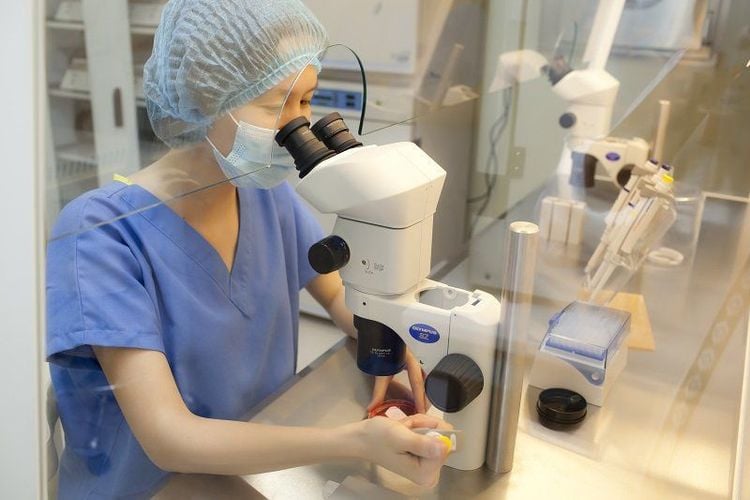
Thụ tinh nhân tạo IVF giúp điều trị hiếm muộn
4. Steps to perform in vitro fertilization
Step 1: Egg stimulation (ovulation)At this stage, the doctor may give the following indications:
Injecting hormone to stimulate egg development: The wife will be injected with a drug containing follicle stimulating hormone. Eggs develop in 10-12 days. These drugs work to stimulate multiple eggs to develop at the same time. During this time, the doctor will assign the wife an ultrasound and blood tests to monitor the development of the follicles. Medications to prevent premature ovulation: To prevent premature ovulation that is detrimental to IVF, your doctor may prescribe medication to prevent this condition. Progesterone supplements: On the day of egg retrieval or at the time of embryo transfer, the doctor may prescribe the patient to use progesterone supplements to thicken the uterine lining, making it easier for the embryo to adhere. than. Step 2: Egg retrieval and sperm collection
Egg aspiration is conducted as follows:
This procedure will be carried out after the last injection of the drug, about 34 - 36 hours before ovulation. During egg aspiration, the patient will be anesthetized so there is no pain. Eggs are removed with a long needle connected to a suction device. Multiple eggs can be removed in about 20 minutes. The eggs are then placed in nutrient liquid (culture medium) and incubated. A healthy and mature egg is mixed with sperm so that fertilization can take place. The reality is that not all eggs can be successfully fertilized. If the husband has not conducted sperm collection and freezing, as soon as the wife conducts egg retrieval, the husband can also collect sperm to prepare for embryo implantation.
Step 3: Embryo creation
Embryo creation can be done by one of two common methods:
Insemination: During fertilization, healthy sperm and mature eggs are mixed and incubated overnight . Intracytoplasmic sperm injection (ICSI): Individual healthy sperm are injected directly into each mature egg. ICSI is often used when the quality of the sperm is poor, the sperm count is too low, or the patient has failed in vitro fertilization. After fertilization, the embryos will be cultured in the laboratory for about 2 - 5 days. During this time, the wife will use vaginal suppositories to prepare for embryo transfer.
If embryos are transferred immediately after embryo creation, it is called fresh embryo transfer. In case the patient has health problems and cannot transfer the embryos, the qualified embryos will be frozen for later transplant.
Step 4: Select embryos for implantation and freezing
After 2 - 5 days from the time the embryos are cultured in the laboratory, the patient will be informed by the hospital about the quantity and quality of the embryos formed. From there, the doctor will discuss to make a decision on the number of embryos to be transferred to the uterus and the number of frozen embryos for later implantation.
Step 5: Embryo transfer
Embryo transfer will be done after about 2 - 6 days of egg collection.
If the wife's uterine lining is examined and found to be favorable for the implantation and development of the embryo, then the embryo transfer will be carried out. A syringe containing one or more embryos and a small amount of liquid is attached to the tip of a long, thin, flexible catheter that is inserted into the vagina, through the cervix, and into the uterus. After completing the embryo transfer, the patient will have to rest for about 2-4 hours at the hospital. During 2 weeks after embryo transfer, the patient is assigned to continue using hormonal drugs and rest, strictly follow the instructions of the treating doctor. Note that in the case of stored embryo transfer, the patient will have an ultrasound and take medicine to monitor the mucosa starting from the 2nd day of the next menstrual cycle within 14-18 days. Then the doctor will choose the right time to transfer the stored embryos.
Step 6: Pregnancy test
About 2 weeks after the embryo transfer, the doctor will perform a test of hCG (Human Chorionic Gonadotropin) levels in the wife's blood or urine to detect whether she is pregnant or not.
If you are already pregnant, your doctor will refer you to an obstetrician for antenatal care.
If not pregnant, the patient should stop taking progesterone and likely menstruate within a week. If you don't get your period or have unusual bleeding, contact your doctor right away. Your doctor may order an embryo transfer in your next menstrual cycle.
5. IVF treatment for infertility at Vinmec International General Hospital
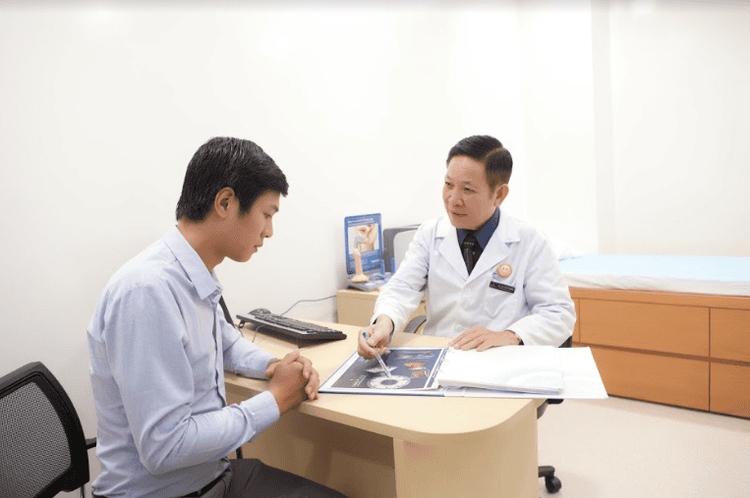
Điều trị hiếm muộn tại Bệnh viện Vinmec
The center gathers a team of leading experts in the field of obstetrics and gynecology nationally and internationally, trained in centers leading in the world such as in the US, Singapore, Japan, Australia and famous fertility centers in the world. Vinmec Fertility Center can perform most of the advanced assisted reproductive techniques in the world such as: classical IVF, ICSI (intracytoplasmic sperm injection), embryo freezing, culture - embryo transfer, support embryo rupture, reduce multiple pregnancies...help realize the dream of parenthood of hundreds of families across Vietnam.
Please dial HOTLINE for more information or register for an appointment HERE. Download MyVinmec app to make appointments faster and to manage your bookings easily.





